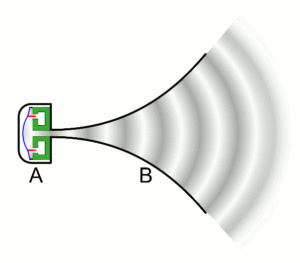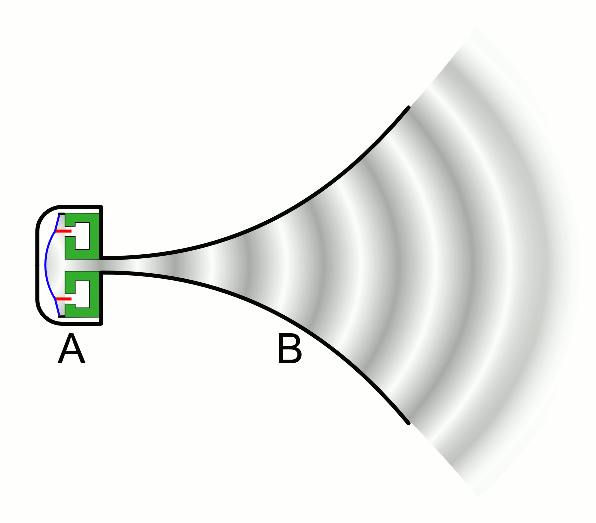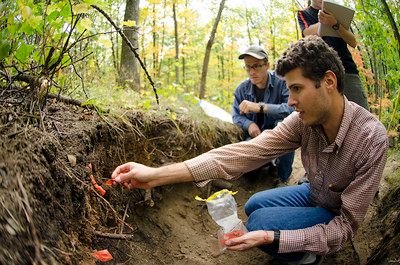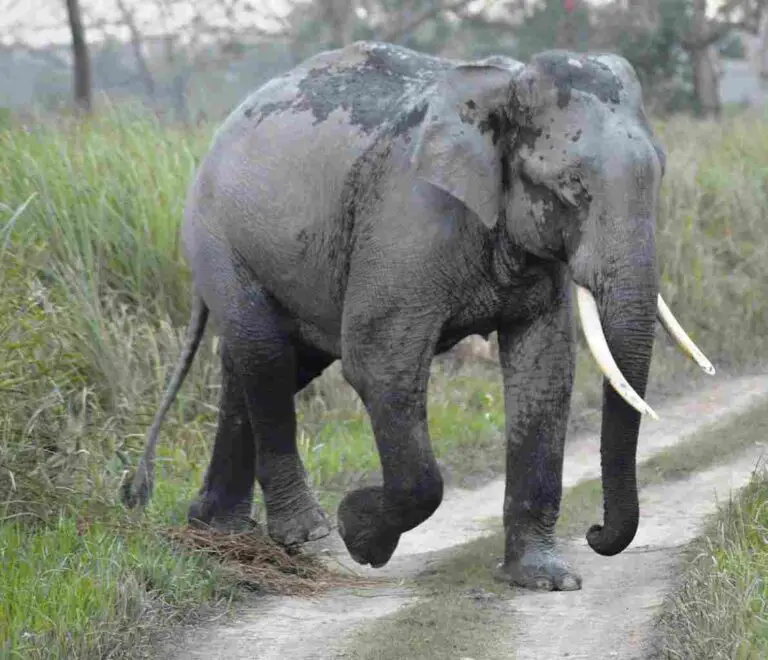5 Types of Energy Transfer Explained
Types of energy transfer are; mechanical, chemical, electromagnetic, thermal, and acoustic energy-transfer pathways.
This article discusses the types of energy transfer, as follows;
1). Mechanical Energy Transfer (as one of the Types of Energy Transfer)
Mechanical energy is transmitted by the action of forces on objects to change their stationary position or trend (speed and/or direction) of motion [5].
It is common for mechanical energy to be transferred in kinetic form from one body to another, so that motion is induced in any body to which mechanical energy is transferred.
The kinetic forces often act alongside potential stored energy in the body that is acting as a source of mechanical energy. Three types of mechanical energy that can be transferred from one body to another are; rotational, translational and vibrational energies.
These different types of mechanical energy can be recognized by the pattern of motion which they induce in a body.
The concept of mechanical energy transfer is very important in engineering and technological systems. It is responsible for the conversion of wind energy to electricity in wind turbines [8], and is a defining process in all technologies related to electricity generation, including steam turbines, gas turbines, and electric generators.
An example of mechanical energy transfer is the transmission of rotary motion from the low-speed shaft to the high-speed shaft through the gearbox in a wind turbine drivetrain. Another example is the oscillation of an anvil on collision with a steel hammer.
2). Chemical Energy Transfer
Chemical energy is energy that is stored in the bonds between atoms. Examples of chemical energy are; ATP in biomass, nuclear energy in radioisotopes, stored energy in batteries, and fossil fuel energy.
A classic example of chemical energy transfer is the consumption of food by living organisms. In this process, chemical bonds in food are broken down to release energy which the organism uses for its metabolism and survival.
Although the release of stored energy from batteries is often viewed as an example of chemical energy transfer, it is rather an example of chemical energy conversion, because the stored chemical energy must first be converted to electricity before it is released from the battery.
Chemical energy transfer occurs on a large scale in ecosystems, in the form of bioenergy that moves from primary producers (plants) to tertiary consumers in food chains, webs and energy pyramids.

3). Electromagnetic Energy Transfer (as one of the Types of Energy Transfer)
As the name implies, electromagnetic energy is a type of energy that exerts both electrical and magnetic-forces along its path of travel. Examples of electromagnetic energy are x-rays, visible light, ultraviolet light, infrared, microwaves and radio waves.
These are also called electromagnetic waves and may occur in a body by reason of induction, or by reason of stored chemical energy, as is the case for nuclear materials that can emit electromagnetic waves.
The principal mechanism by which electromagnetic energy is transmitted is called radiation [7], and involves the release and flow of electromagnetic waves from a body, through a vacuum.
Electromagnetic energy transfer is a very important concept in science, because it is linked to several phenomena like electromagnetic induction, light energy transmission, and nuclear radiation.
The transfer of light energy across space is a form of electromagnetic energy transfer, and partly explains how plants capture solar energy from the Sun for their photosynthesis [9].
Radiation which is the main mechanism by which electromagnetic energy is transferred, is also one of the three main mechanisms of thermal energy transfer, alongside conduction and convection.
In radio communication technology, the transmission of radio signals represents an example of how electromagnetic energy transfer can be used in real-life scenarios [1].
4). Thermal Energy Transfer
Thermal energy transfer is the process by which heat is transmitted from one body to another.
The three (3) types of thermal energy transfer are; conduction, convection and radiation [4].
An example of thermal energy transfer is the heating-up of a metal cup into which hot water has been poured. This type of thermal energy transfer is conduction, which is identified by its requirement of physical contact between the two bodies involved in the transfer process.
Like mechanical energy transfer, thermal energy transfer is important in power generation for producing hot fluid (like steam) which is used to spin a turbine. It is also important in factory systems like metalwork and glasswork factories, to transform raw materials to finished products.
5). Acoustic Energy Transfer (as one of the Types of Energy Transfer)
Acoustic energy refers to a variant of mechanical energy that occurs in the form of molecular vibrations in a body as a result of contact with acoustic waves.
It is called acoustic because it is often propagated in the form of sound waves that can travel through a vacuum from one body to another, like electromagnetic waves.
Contactless energy transfer using ultrasound is a relatively-recent concept that describes how acoustic energy transfer can be used to energize a body through vibratory reaction to waves [10].
Acoustic energy transfer is particularly important for transmitting low-magnitude, low-power energy [2], and is a promising option for wireless transmission in general.
The efficiency of acoustic energy transfer depends on the efficiencies of transmitters, receivers; and the path of propagation involved [3].

Conclusion
Types of energy transfer are;
1. Mechanical Energy Transfer
2. Chemical Energy Transfer
3. Electromagnetic Energy Transfer
4. Thermal Energy Transfer
5. Acoustic Energy Transfer
References
1). Brodie, G. (2019). "Energy Transfer from Electromagnetic Fields to Materials." Electromagnetic Fields and Waves. Available at: https://doi.org/10.5772/intechopen.83420. (Accessed 18 March 2023).
2). Chen, C.; Wen, Z.; Shi, J.; Jian, X.; Li, P.; Yeow, J. T. W.; Sun, X. (2020). "Micro triboelectric ultrasonic device for acoustic energy transfer and signal communication." Nat Commun. 2020 Aug 18;11(1):4143. Available at: https://doi.org/10.1038/s41467-020-17842-w. (Accessed 18 March 2023).
3). Hwang, Y.; Moon, W. (2017). "Power Efficiency Calculation of Acoustic Energy Transmission by a Stepped-Plate Radiator." Energy and Power Engineering 9(4):232-240. Available at: https://doi.org/10.4236/epe.2017.94016. (Accessed 18 March 2023).
4). Nanda, M. K. (2018). "Energy Heat Transfer." e-PGPathshala in the subject- Environmental Sciences, paper-Atmospheric Processes, MHRD, Govt. of India. Available at: https://www.researchgate.net/publication/325115895_Energy_Heat_Transfer. (Accessed 20 March 2023).
5). Rivaldo, L.; Taqwa, M. R. A.; Zainuddin, A.; Faizah, R. (2020). "Analysis of students’ difficulties about work and energy." Journal of Physics Conference Series 1567(3):032088. Available at: https://doi.org/10.1088/1742-6596/1567/3/032088. (Accessed 18 March 2023).
6). Robertson, D. G.; Winter, D. A. (1980). "Mechanical energy generation, absorption and transfer amongst segments during walking." J Biomech. 1980;13(10):845-54. Available at: https://doi.org/10.1016/0021-9290(80)90172-4. (Accessed 18 March 2023).
7). Rohli, R. V.; Li, C. (2021). "Energy Transfer and Electromagnetic Radiation. In: Meteorology for Coastal Scientists." Springer, Cham. Available at: https://doi.org/10.1007/978-3-030-73093-2_3. (Accessed 18 March 2023).
8). Vel, S. C.; Thangavel, V.; Kuppusamy, S.; Raja, K.; Samjasper, P. (2018). "A Wind Power Generating Electricity by Fast Moving Vehicles." Available at: https://www.researchgate.net/publication/334747243_A_Wind_Power_Generating_Electricity_by_Fast_Moving_Vehicles. (Accessed 20 March 2023).
9). Wilson, R. (2021). "Plant solar power: unlocking the secrets of photosynthesis with X-ray free-electron lasers." Available at: https://www.scienceinschool.org/article/2021/unlocking-the-secrets-of-photosynthesis/. (Accessed 20 March 2023).
10). Zaid, T.; Saat, S.; Jamal, N.; Yusop, Y.; Huzaimah, S. H.; Hindustan, I. (2016). "A Study on Performance of the Acoustic Energy Transfer System Through Air Medium Using Ceramic Disk Ultrasonic Transducer." Journal of Applied Sciences 16(12):580-587. Available at: https://doi.org/10.3923/jas.2016.580.587. (Accessed 18 March 2023).






